How Hot Does Your Car Get – A Look at Heatstroke Death Risks

Picture this: You are driving to the grocery store for a gallon of milk. You look in your rearview mirror and notice that your toddler has fallen asleep in her car seat; the dog is peacefully lounging next to her. You look at the temperature on your car’s display: 70 degrees outside. That’s not too hot.
Maybe you could run in quickly, grab the milk, and be back to the car before it warms up too much. Hopefully, you won’t see your chatty neighbor while you’re shopping. You decide to dash in and out. But is it a good plan?
Most of us have been in a similar dilemma and wondered if it really is as unsafe as experts say it is to leave children and pets in a parked vehicle. So we decided to do a little research to discover just how hot it gets inside cars.
Read on to better understand the risks when you are faced with the decision to leave a child or pet in a vehicle.
Heating Up Quickly
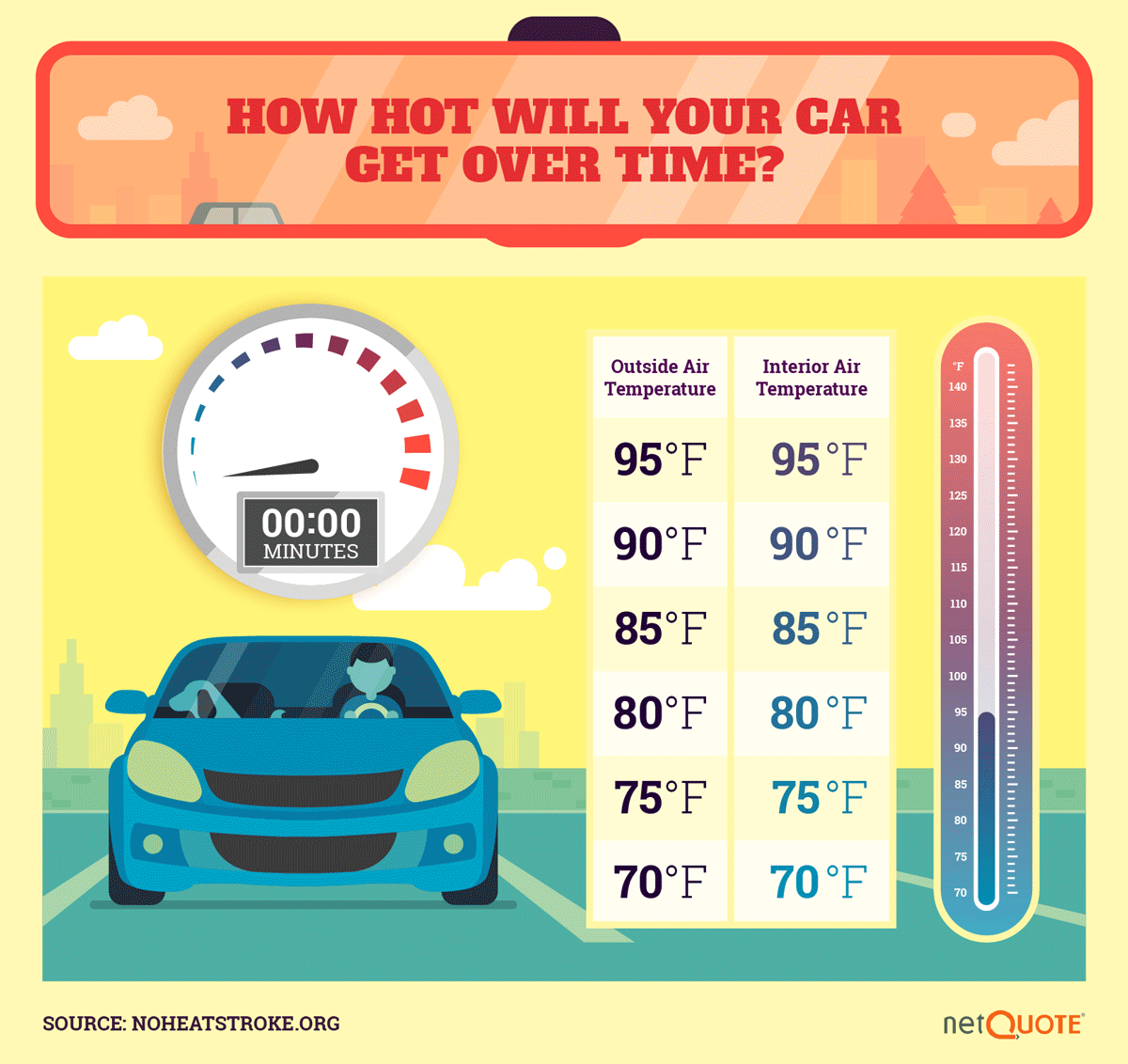
When we think of hot cars, our minds may wander to places like the Southwest and the Southeast. It can get hot in those regions, especially during the summer. But you don’t have to live in a swamp or desert for your car to heat up, thanks to something called the greenhouse effect.
Sunlight penetrates glass windows and heat gets trapped in parts of the car, like the dashboard or seat. Then, because it is closed off from the air outside, the heat stays and magnifies.
We looked at a vehicle heating study that analyzed base outside air temperatures (between 70 to 95 degrees) to find out how hot the interior of a car might get in only 60 minutes. While high temperatures in places like Arizona might not surprise you, the inside of a car can get to 113 degrees pretty quickly in cooler climates. Across the board, no matter where you live, vehicles can get hot fast.
Heat Rises
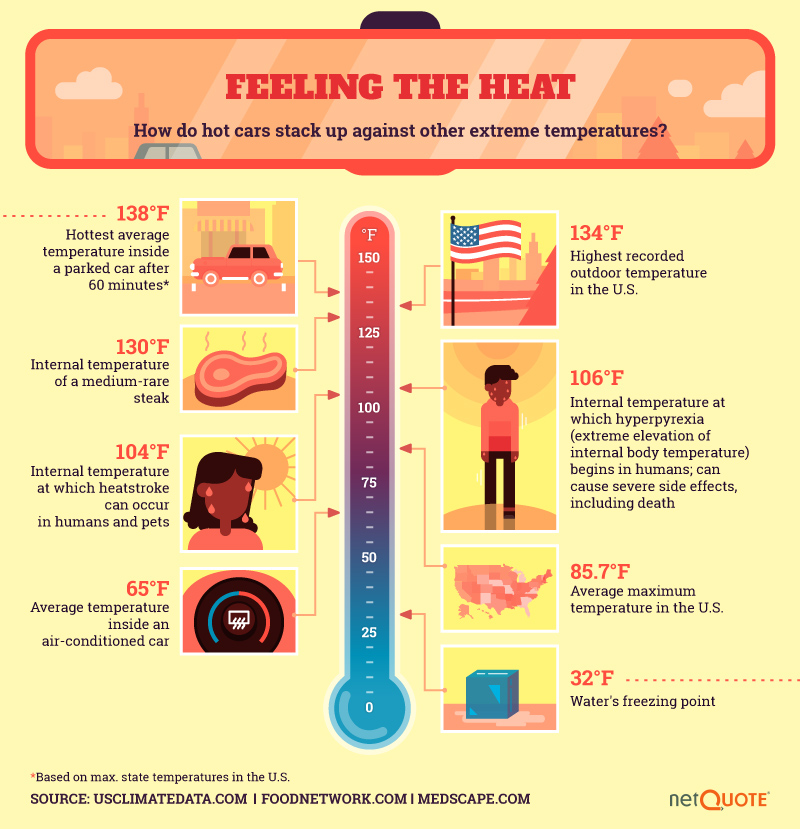
Yes, it can get hot inside a car. We’ve all put up with a little heat; what’s the big deal? In fact, the human body can only tolerate so much heat before it rapidly begins failing.
Children’s bodies especially can’t tolerate the heat. Because their body mass is so small and their body systems are undeveloped, young children can’t regulate the heat in their bodies like adults can. We looked at various temperatures to get a picture of how these events fit together. As you can see in the chart above, heatstroke can occur when the body warms up to 104 degrees.
At just a couple of degrees higher, the body starts shutting down, and organs start to fail. At around 106 degrees, hyperpyrexia sets in, and can cause brain damage and death. After 60 minutes in a parked car, the heat inside can rise to an average of 138 degrees, proving how quickly a hot car can become fatal to any lingering passengers.
Child Deaths This Year
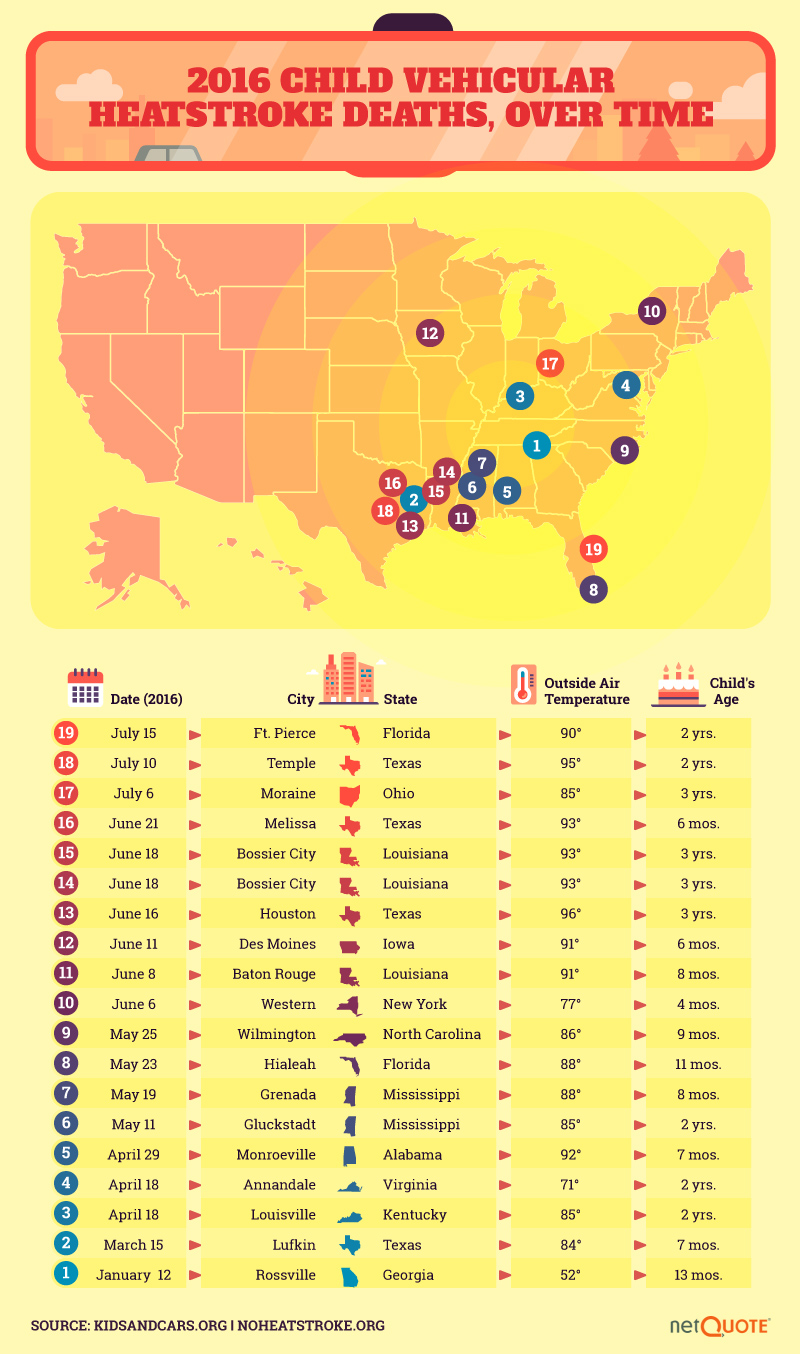
Most of us have heard tragic stories of a parent leaving a child in the car, forgetting he or she is there, and coming back later to discover the child unconscious. It’s a terrifying thought, yet it still happens to many parents and children each year.
Since January 2016, 19 children have died in heat-related car deaths. As you can see from the statistics, heat doesn’t discriminate or follow a specific pattern. Even on a January day in Georgia, a child can die. When it’s only 77 degrees in Western, New York, a child can die. The heat inside a car is a serious matter, no matter where you live.
Child Heatstroke Deaths Across America
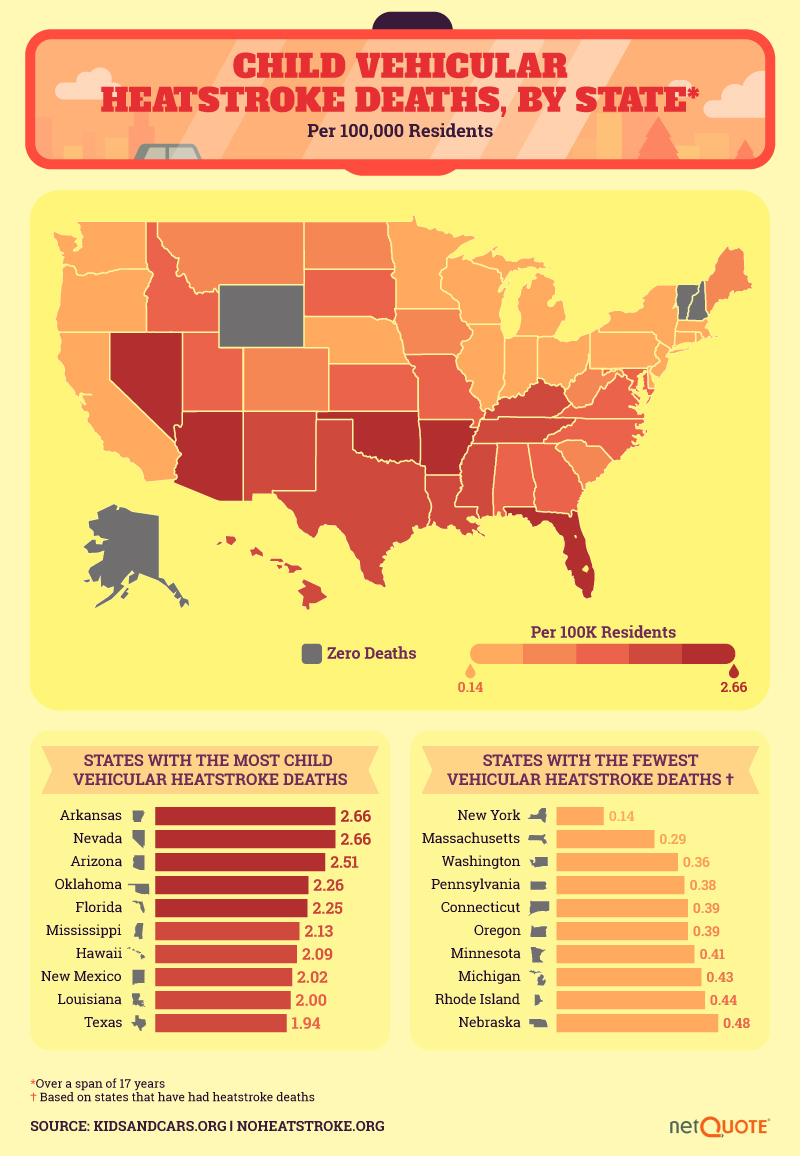
While heatstroke can kill anyone, more than 70 percent of heatstroke deaths occur in children younger than 2 years old. And in states where temperatures can rise well beyond 100 degrees, this is an even more unfortunate reality. When we looked at the number of child heatstroke deaths per 100,000 U.S. residents, we found that the top 10 states also experienced incredibly hot temperatures.
For example, Arkansas (which has a humid, subtropical climate) experienced 2.66 deaths per 100,000 residents from 1998 to 2015. Nevada, with its desert climate, had the same amount of deaths. Arizona (2.51), Oklahoma (2.26), Florida (2.25) and Mississippi (2.13) also saw a high amount of child vehicular heatstroke deaths.
On the other hand, the states with the fewest child vehicular heatstroke deaths tended to be in the cooler North. New York only had about 0.14 deaths per 100,000 residents, and Massachusetts only had about 0.29. Washington experienced 0.36 deaths, while Pennsylvania had 0.38. Down the list, the bottom 10 states did not exceed 0.40.
Only four states in the country have not recorded a child vehicular heatstroke death in the past 17 years: Alaska, New Hampshire, Vermont and Wyoming.
Child Heatstroke Deaths Over Time
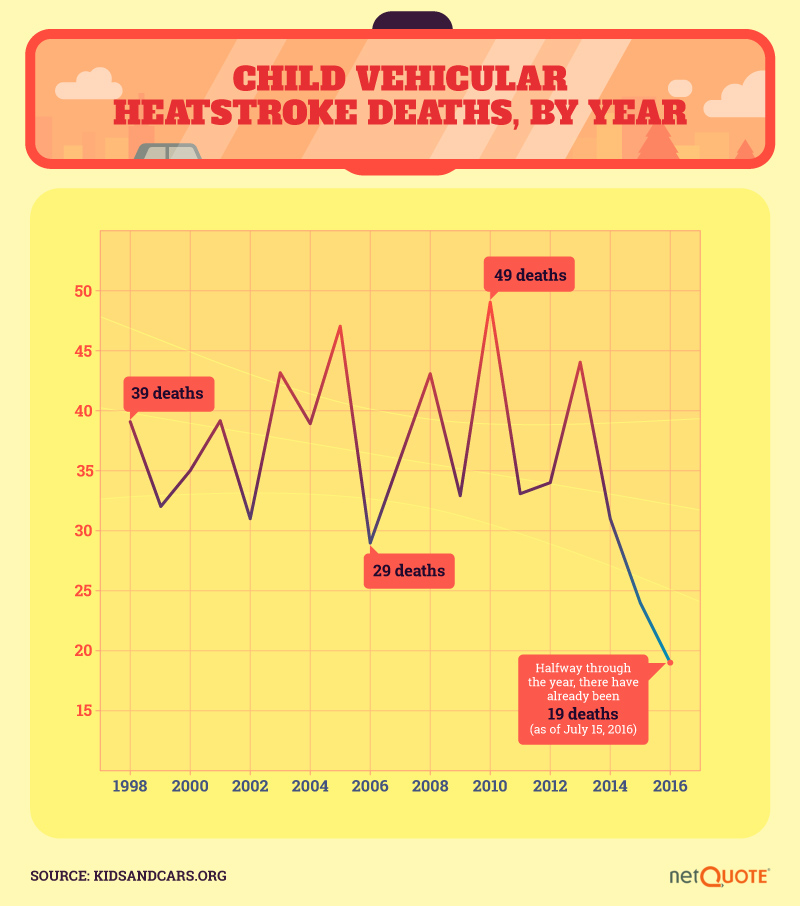
Parents strap their toddlers in their car seats, they fall asleep, and the parents forget that they are even there. Being in the backseat is definitely the safest place for children, especially in the event of a car crash, so parents must be vigilant to keep an eye on their kids and not leave them in the car alone.
As you can see, dozens of children die each year after being left in a car for too long. On average, 37 children die each year from vehicular heatstroke. This means we are well on our way to contributing to the average again this year.
Leaving a child in a car is dangerous, no matter the time of year or length of parental absence.
It Could Happen to Any Parent
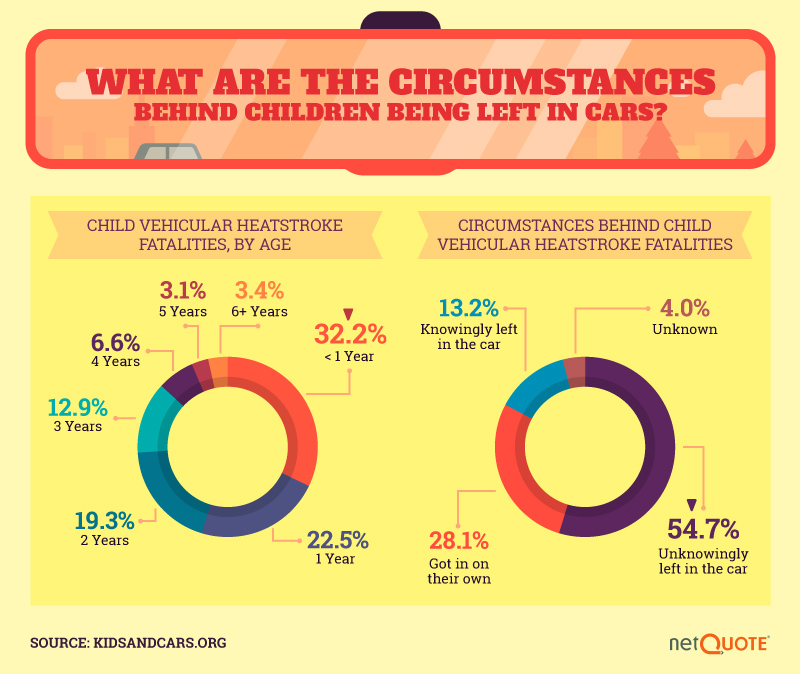
As we read stories of parents whose children have died in a hot car, it’s easy for us to say we wouldn’t ever do it. But research shows that these parents are typically loving, attentive and responsible people who simply had a lapse in memory that led to a horrible event.
Basically, it can happen to anyone. Knowing the typical scenarios can help you avoid the situations that could potentially lead to a fatal ending.
We looked at data related to both the average ages of children who die from vehicular heatstroke and the many reasons that they end up in the car in the first place.
Statistics show that the younger the child, the more likely he or she will be forgotten in the car. We found that the overwhelming majority of cases occur with babies and toddlers from 1 to 3 years old. As they get older, they can often unbuckle themselves and climb out of the car on their own. When looking at the reasons children ended up left in the car, most parents cited forgetting that the child was there (over 54 percent).
Another common reason for vehicular heatstroke death was that children had climbed into the car themselves, then got stuck or locked in (28 percent).
In only 13 percent of cases did the parent intentionally leave the child in the car. Because it’s not well understood how hot cars can get, it’s likely that a few of these parents didn’t know that letting their toddler nap in the car could be so dangerous.
Protection Laws for Children
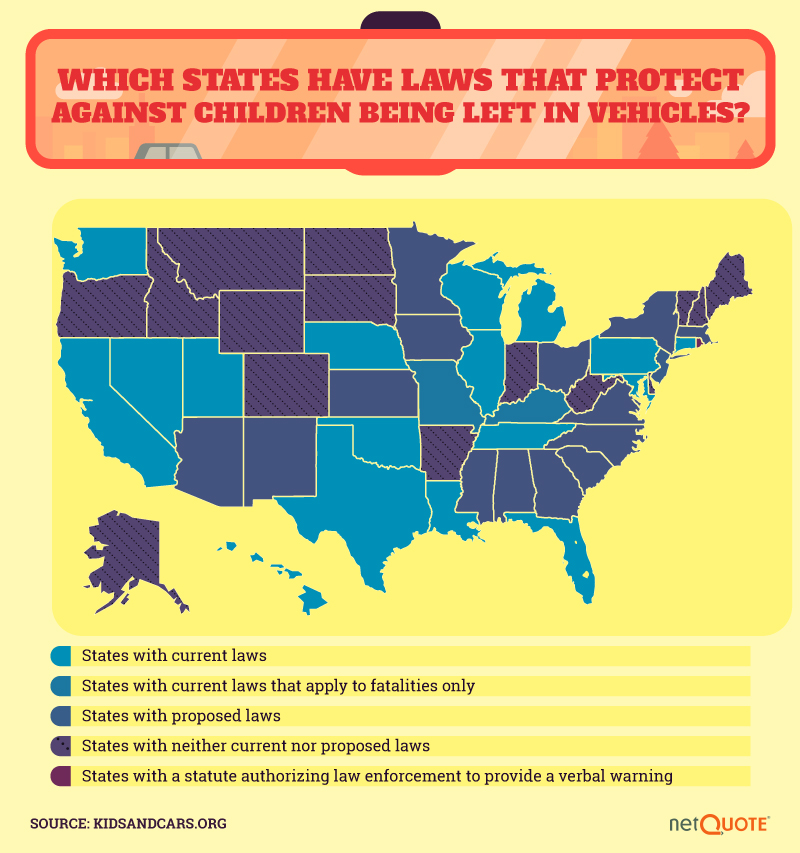
Laws aimed at protecting children and pets left in cars vary across the country. Enforcement of those laws can also differ from state to state. If you see a child sitting in a car alone, there are even variations in laws that would protect your ability to intervene.
In some states, you might be protected under Good Samaritan laws, but that’s not always the case. In the next couple of decades, we are likely to see more legislation passed that will protect children and pets, criminalizing the act of leaving them in a car alone. Whether this will be an effective move toward reducing vehicular heatstroke is still unknown.
Protection Laws for Pets
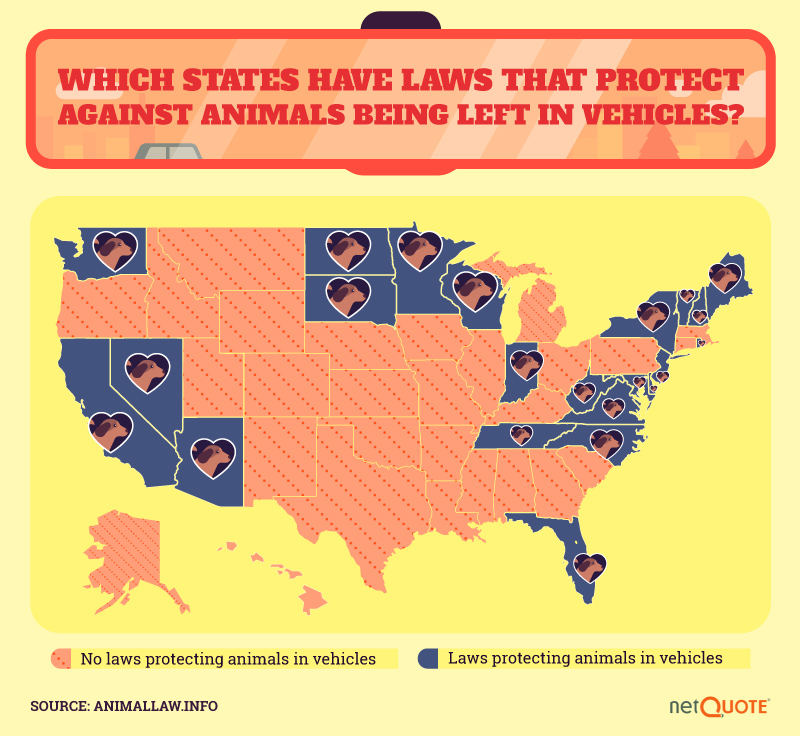
We also pulled data about similar laws on canines left in cars. When it comes to dogs, the laws are sparse. There are a few states with existing laws against leaving your pooch in a hot car. California, the Dakotas, and several states in the Northeast have all successfully passed laws.
Conclusion
Leaving children unattended in a car for even a minute can be painful for them and can lead to an unintended outcome. Vehicles heat up quickly and can become ovens that will even bake food. A car-oven is no place for a child or pet, as the heat can lead to heatstroke and death in less than an hour.
So even though it is tempting to leave that baby or toddler in the car to finish out a nap, resist the thought. And if you see a child stuck in a car alone, especially on a summer day, advocate for them. Find out where they belong –- and if you can’t locate a parent or guardian quickly, call 911.
Every minute counts when preventing vehicular heatstroke. We can all get involved in preventing these deaths.
Methodology
For our “How Hot Does Your Car Get” GIF, we visualized the following information resulting from a vehicle heating study conducted by Catherine McLaren, Jan Null and James Quinn. The information covered in the “2016 Child Vehicular Heatstroke Deaths” graphic is current as of July 15, 2016.
Sources
http://scienceline.ucsb.edu/getkey.php?key=1606
http://www.archildrens.org/News/HappyHealthyAdvicefromACH/HotCars.aspx
http://www.webmd.com/parenting/features/hotcarsandchilddeathprevention
http://abcnews.go.com/blogs/health/2014/06/24/morekidsaredyinginhotcarsgroupclaims/
http://www.cdc.gov/features/passengersafety/
http://www.kidsandcars.org/howkidsgethurt/heatstroke/
http://www.kidsandcars.org/2016/06/29/anepidemicofchildrendyinginhotcarsatragedy-
http://www.srh.noaa.gov/oun/?n=safetysummerbeattheheat
https://www.safekids.org/heatstroke
https://issuu.com/safekids/docs/good_samaritan_laws
http://www.humanesociety.org/animals/resources/tips/helpdoginhotcar.html
https://www.animallaw.info/topic/tablestatelawsprotectanimalsleftparkedvehicles
http://pediatrics.aappublications.org/content/pediatrics/116/1/e109.full.pdf
Fair Use
Like what you see? We highly encourage you to share the information presented here. All we ask is that the writer is given credit by linking back to this article. This way, readers are able to discover more about this project and find additional research if they so desire.
